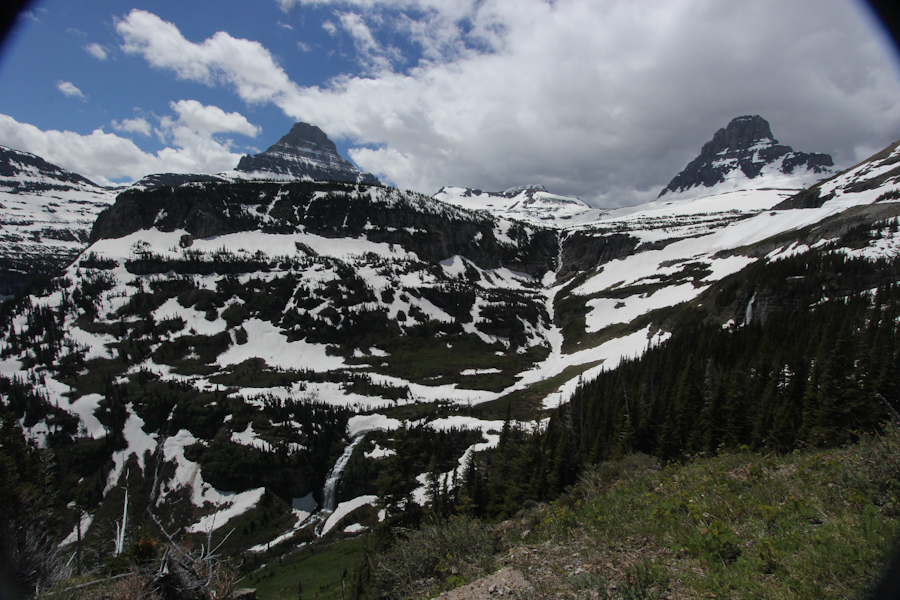

You'll notice that this page is called "Logan Pass." We weren't supposed to be able to go to the Logan Pass, were we? It was supposed to be closed for another week. We were supposed to spend Saturday driving the west side of the Going-to-the-Sun Road up to Avalanche Creek. My friend Joe the photographer had recommended a 7-km hike to Avalanche Lake that we were trying to fit in. Logan Pass?
As we were leaving the lodge, after a good night's sleep at last, we saw a man standing facing the flag loudly singing "The Star Spangled Banner." A man in uniform was sitting in a rocking chair on the porch, and told us that that guy stood there and sang to the flag every day. The uniformed many seemed to think it was kind of crazy, but the guy was a reasonably good singer, so it didn't seem like a terrible thing to us. It turned out that the uniformed man was the driver of one of the 1930's red buses. He told us his 9:00 trip was going to be the first to the Logan Pass this year, because the road to the Logan Pass had just opened up that morning.
Oh, my. What should we do? Going to the Logan Pass would probably mean missing the whole west side of the park altogether. We asked the man, and he said that, while both were nice, if we wanted to do photography, we should go to the Loan Pass. "Let's go, honey!" I said.
We went back to Luna's and had another great breakfast, but the wi-fi was down. That was disappointing.


















Eric figured out that, if the road west of the pass was open to cyclists, it must also be open to pedestrians. He also figured out that there was a cache nearby that promised a waterfall.
"We can't go a day without a waterfall hike, can we?" I asked.
"You're going to have a hard time come Tuesday," he replied.



















Now, we had to drive back outside of the park, and down around on the other road to the west side. The ranger, trying to reassure me when she told me we wouldn't be able to go all the way over the Going-to-the-Sun Road, had told me we'd get to see a goat lick.



We hurried back to get on the way to Missoula without going to see McDonald Falls, because Lulu was telling us we were not going to get to Missoula until almost 21:00. Although I expected the University of Montana town to have more restaurants open late, I didn't really want to take chances, and wanted to pad our time a little bit. After we got out of the park, though, Lulu changed her mind and told us we had another hour. We felt cheated.
I wish we had gone all the distance we could have on the west side of the road, but at least we got to see the Logan Pass!
Distance hiked: about 2 km (on a paved road)?
On to Craters of the Moon National Monument and Preserve.